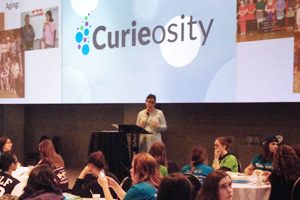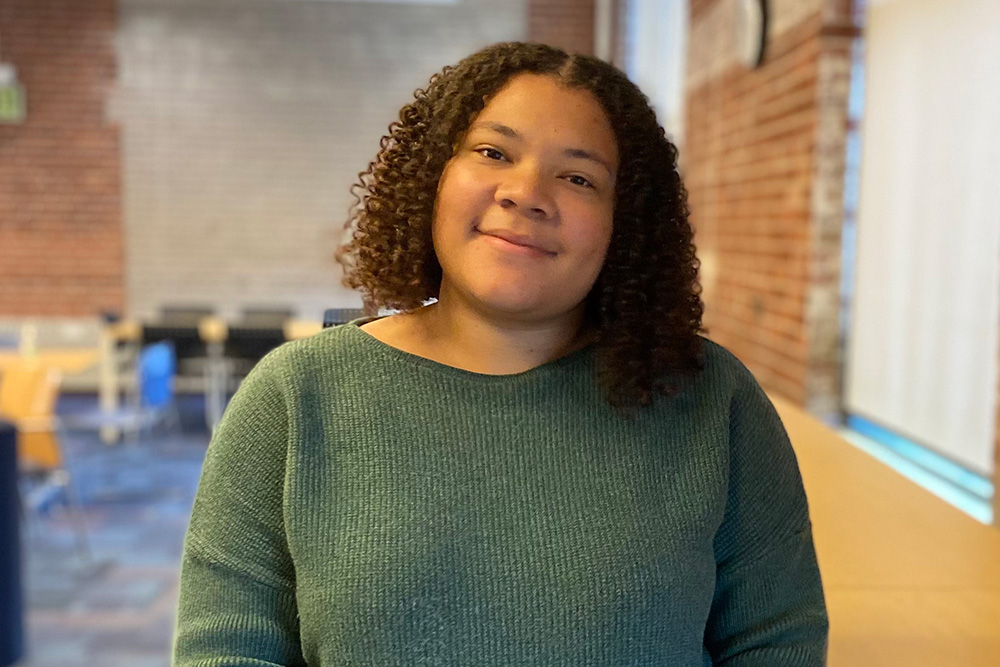UOIT’s Provost and Vice-President, Academic speaks at women in science and technology event
June 3, 2014

Dr. Deborah Saucier, the University of Ontario Institute of Technology’s (UOIT) Provost and Vice-President, Academic, was one of 10 speakers to share her story about her career as a Science researcher and senior university leader at a conference designed to celebrate women in science, technology, engineering and mathematics (STEM) careers and encourage the next generation of young women to pursue vocations in these fields.
At the Curieosity Student Leadership Conference, hosted by Mad Hatter Technology, close to 200 senior high school students from the Cambridge, Kitchener and Waterloo area heard inspiring talks from women who shared their ideas, insights and personal stories. The conference was held at the Tannery Event Centre in Kitchener, Ontario, on May 29.
Dr. Saucier, who prior to joining UOIT was Chair of the Department of Neuroscience and Tier 2 Canada Research Chair in Behavioural Neuroscience at the University of Lethbridge in Alberta, gave a talk titled Exploring Neuroscience, where she recounted how she became interested in a field that melds both science and psychology. She discussed neurogenesis – the growth and development of nervous tissue - and how this process changes with age. She also outlined some of the factors affecting neurogenesis, including aging, stress, toxins and environmental stimulation, and touched on some of the most common neuro-degenerative diseases, such as dementia, Parkinson’s disease, amyotrophic lateral sclerosis (ALS) and stroke. Quoting American television host and comedian Conan O’Brien, she summarized what she has learned from her career journey: "Nobody in life gets exactly what they thought they were going to get. But if you work really hard and you’re kind, amazing things will happen."
“I was pleased to have the opportunity to share my experiences with this group of female students and encourage them in their pursuit of careers in the science, technology, engineering and mathematical fields,” said Dr. Saucier. “If we are to increase the presence of women in science and technology, we need to counter the fallacy that girls can’t do math and science. Historically, women have made major contributions in the STEM fields, and they continue to do so today. We need to present the younger generation of women with more examples of strong and successful female role models who have succeeded in areas such as Computer Science, Robotics and other traditionally male-dominated fields. We hope this conferences has helped demonstrate just how interesting and exciting a STEM career can be – and how viable this option really is for women.”
Curieosity is named for Marie Curie (1867-1934), a Polish physicist and chemist. As a young girl Curie was interested in the sciences but her father, a science teacher, could not afford to send her to college. She began working and saved enough of her own money to enrol at the Sorbonne (now the University of Paris) in France. She earned her degree in physics in 1893 and another in mathematics the following year. She went on to win the 1903 Nobel Prize in Physics, shared with her husband, Pierre Curie and French physicist Henri Becquerel, for their groundbreaking investigations of radioactivity. She also won the 1911 Nobel Prize in Chemistry for the isolation of pure radium. She was the first woman to win a Nobel prize, the first person to win a second Nobel prize, and the only person to win in multiple sciences.


